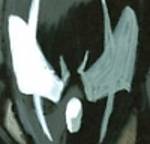I profess absolutely no expertise and I'm sure someone will be able to give you better info but here's my two bobs worth!
I've looked at a few "Stuka" pictures with this in mind. Most wear appears to be on the wing root walkways with associated scuffing on the fuselage sides. Presumably this is from crew access and maybe ground crew leaning in to help with harnesses etc. Also ground crew stood on the spats over the wheels to access the engine and the top of these is often quite worn.The leading edge of the wing, at the root ,often appears worn, I suspect crew may have slid off the wing in this area. I read somewhere (but I'm b**gered if I can remember where) that high traffic areas were primed in RLM 02, so I guess this would show through before the aluminium skin. Everything else seems to be general wear and tear around access panels,filler caps and so on.
Cheers
Steve






















